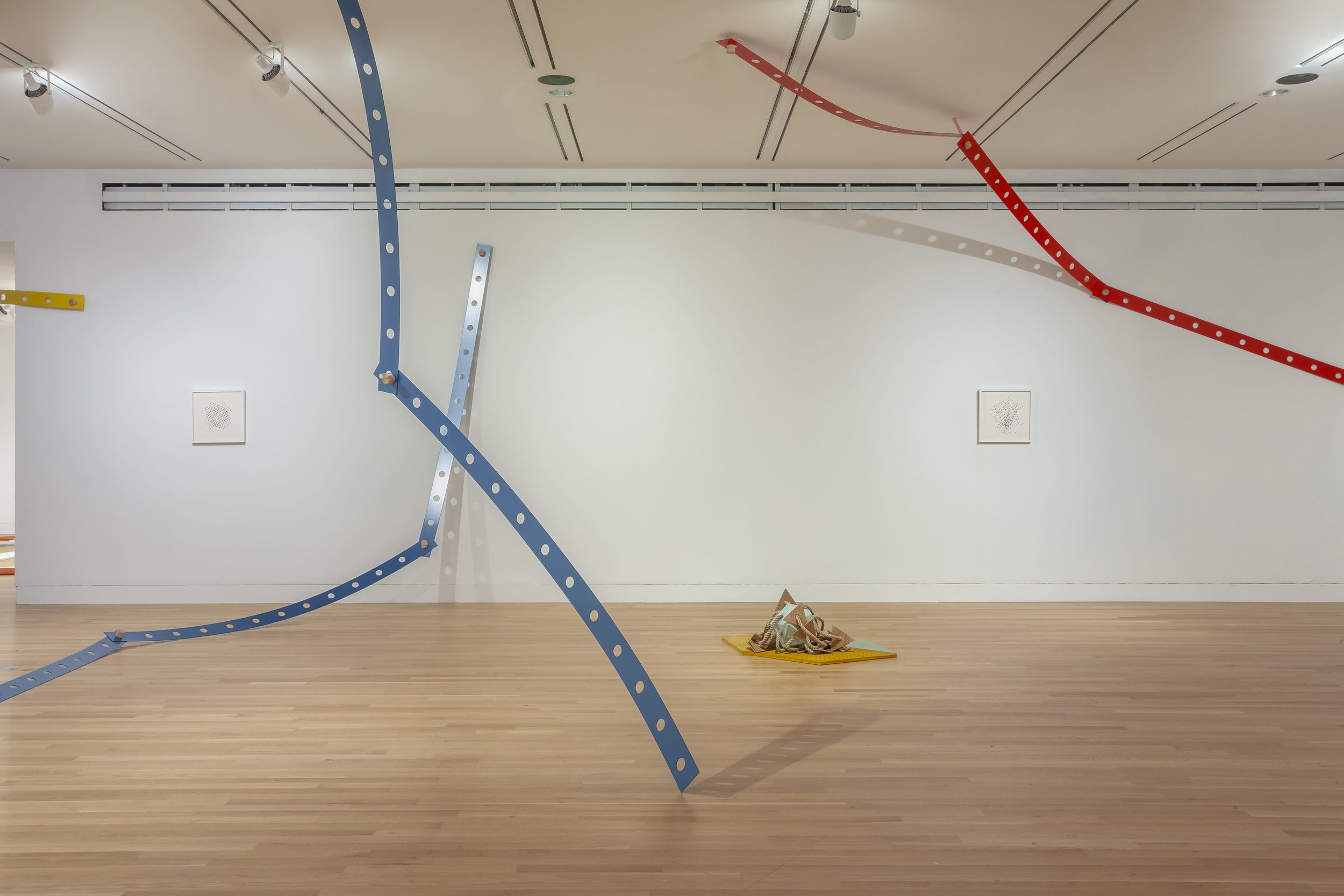An Introduction to Mariana Castillo Deball: Petlacoatl
Installation view of Mariana Castillo Deball: Petlacoatl. Courtesy Logan Center Exhibitions
By Clare Austen-Smith
If you’re hoping to arrive at work on time or remember an appointment, the Mesoamerican tōnalpōhualli won’t be of much use. But, if you’d like to know the fate of your child based on the date they were born or a particularly auspicious day to plant your crops, the pre-colonial, 260- day divinatory tool might come in handy. This ancient calendar is the central artifact explored in Mariana Castillo Deball’s first solo show in Chicago, Petlacoatl, at the Logan Center Gallery.
Petlacoatl is the Nahua word meaning “mat woven of snakes pointing in all directions.” This symbol was often included in ancient divinatory calendars like the tōnalpōhualli, which marked time through 20 distinct periods that each last 13 days.
“It’s important to think about similarities so we can recognize the humanity of the past, but also about differences, so that we don’t erase cultural and historical specificity.”
“Each day is a combination of a day sign and a number and they run concurrently, until all the combinations are exhausted,” Deball says. “20 day signs multiplied by 13 numbers gives us 260 days.”
The calendar can be visualized by imagining two wheels connected to one another. One wheel includes the numbers one to 13, and the second wheel exhibits 20 symbols, like a crocodile, a house, a reed, wind, and more (see opposite page). The first number combines with the first symbol to signify the first day of the tōnalpōhualli, the second number is paired with the second symbol, and so on. On day 14, the number wheel returns to one, while the symbol wheel cycles through the rest of the icons before returning to the first symbol. This continues on until 260 days have passed, and the wheels return to their initial positions to begin a new year.
For Petlacoatl, Deball drew inspiration from the visual organization of the Codex Fejérváry-Mayer (above), a pre-colonial manuscript in which the 260 days of the tōnalpōhualli are represented by circular spacers along a ribbon that flows around the border of a central panel. The ribbon forms a cross shape on the page and each colorful arm stands in for one of the cardinal directions: red for the east, yellow for the north, blue for the west, and green for the south.
In addition to measuring time, the tōnalpōhualli was a divinatory system in which spatial coordinates, agriculture, and ritual sacrifices intersected. It carried augural messages, defining the way people conducted their affairs.
The work in Deball’s exhibition at the Logan Center Gallery responds to these various uses of the calendar and engages the viewer’s space . A new suite of delicate watercolor drawings adorns the walls while modular concrete tiles and plaster sculptures are placed throughout the exhibition. In addition to responding to the iconography, visual schema, and color of the calendar in her drawings and floor sculptures, the days of the week are represented by 13 perforations along 20 extruded aluminum strips that criss-cross the gallery. As you walk through the gallery, you experience a full calendar year, and the intangible aspect of time becomes a physical reality.
The research behind Deball’s exhibitions— drawing on a range of fields that includes anthropology, archeology, and ethnography—aligns closely with topics that Claudia Brittenham, Associate Professor of Art History and the College, Pre-columbian Art, explores in her own work. In her class Image and Text in Mesoamerican Codices, Brittenham explains that she “works with many of the documents that were the inspiration for [Deball’s] body of work.”
To Brittenham, comparing calendars used today with those employed by ancient Mesoamericans sheds light on both the present and past, but that’s only an entry point. “We have calendars and Mesoamericans had calendars, but they worked differently and people used them in different ways,” she says. “They had different histories behind them. It’s important to think about similarities so we can recognize the humanity of the past, but also about differences, so that we don’t erase cultural and historical specificity.”

